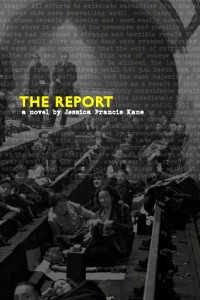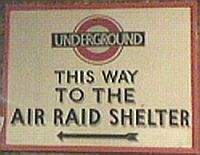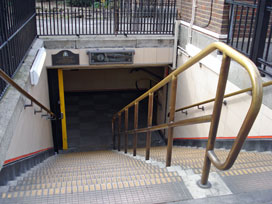“Half the testimony [at the inquiry into the March 3, 1943, events at Bethnal Green] contradicted the other. The crowd was quiet; the crowd was loud. The constables and wardens had worked hard; the constables and wardens were nowhere to be seen. There was light on the stairs; the stairs were dark. There was a loud blast no one had ever heard before; there were no unusual sounds that night.”
In the midst of the Blitz in London in 1943, an event took place in Bethnal Green that was so extraordinary it is not understood completely even to this day. On March 3, 1943, when the air raid warning sirens went off, thousands of people headed, as usual, toward the nearest bomb shelter, the local Tube station, a one-entrance location which could accommodate up to ten thousand people within a few minutes of their arrival. Some had come here many times and knew that they could reserve cots and places to sleep for the night. Others just took their chances, hoping that the emergency would not last long and that they would be able to return to their homes soon afterward.
the Blitz in London in 1943, an event took place in Bethnal Green that was so extraordinary it is not understood completely even to this day. On March 3, 1943, when the air raid warning sirens went off, thousands of people headed, as usual, toward the nearest bomb shelter, the local Tube station, a one-entrance location which could accommodate up to ten thousand people within a few minutes of their arrival. Some had come here many times and knew that they could reserve cots and places to sleep for the night. Others just took their chances, hoping that the emergency would not last long and that they would be able to return to their homes soon afterward.
On this night, something unique happened. One hundred seventy-three people died of asphyxia within a minute of their arrival at the station, all suffocated in the crush on the first twenty stairs of the entrance. Not one of the victims had managed to reach the landing at the bottom, only a few feet away, from which another seven stairs down would have guaranteed their safety. Ironically, “not a single bomb had fallen in the city that night.” All these deaths were accidental.

Author Jessica Francis Kane, who found and studied the original government inquiry into the reasons for this catastrophe, draws on the facts of the real Bethnal Green case to create a fictionalized version of what went wrong. The actual facts, gathered and put into a report by Sir Laurence Dunne within three weeks of the events, had been hushed up by the government so as not to alarm the people, give any information to the enemy, or create questions about the government’s ability to handle crises. Dunne had interviewed eighty witnesses, some of them more than once, and, wanting to avoid placing blame on one or two individuals who might have become scapegoats, when there were many issues which had contributed to these deaths, he had written his report with a concern for human feelings and for what human beings need in order to deal with such disasters during fraught times such as war. “Perhaps,” he suggests, “we should only sometimes be held accountable for the unintended consequences of our actions.”
Creating a cast of repeating characters which becomes more and more developed as the action proceeds, Kane shows the involvement of all facets of British society as they deal with this disaster. The attitudes toward refugees, especially Jews, affect the perceptions of some of the witnesses, while others, actively involved in the protection of lives during the Blitz, assume blame which was really not theirs to assume. Some have secrets about what happened that night, and others become privy to secrets held by those they know and protect, refusing to reveal these secrets during the inquiry because they know that the person(s) did not mean for any harm to result. The thirtieth anniversary of the tragedy brings all these issues to light once again when Paul Barber, a twenty-nine-year-old who was an infant orphaned by the disaster, contacts Sir Laurence Dunne for information for a television documentary he is producing. Soon both are reliving the events and their aftermath.
 Kane carefully reveals the facts of the case, but she does so within the context of the lives of her characters, always showing how and why these people say and do what they do, and always leaving the door open for other interpretations of their actions. As the characters become more fully understood, they elicit sympathy from the reader, and by the time that all the details are known, the reader feels the same sorts of conflicts that Sir Laurence Dunne felt when he wrote his report. James Low, the chief shelter warden, is unable to forgive himself because his conscientious efforts failed. An eight-year-old who lost her four-year-old sister has seen something that forever affects her life and her relationship with her mother, and she neither forgives nor forgets. Rev. McNeely, of St. John’s Church, across the street, is hard pressed to see the big moral picture which Sir Laurence Dunne feels is so important as he writes his inquiry, recognizing instead the individual issues which he feels have clear black and white answers.
Kane carefully reveals the facts of the case, but she does so within the context of the lives of her characters, always showing how and why these people say and do what they do, and always leaving the door open for other interpretations of their actions. As the characters become more fully understood, they elicit sympathy from the reader, and by the time that all the details are known, the reader feels the same sorts of conflicts that Sir Laurence Dunne felt when he wrote his report. James Low, the chief shelter warden, is unable to forgive himself because his conscientious efforts failed. An eight-year-old who lost her four-year-old sister has seen something that forever affects her life and her relationship with her mother, and she neither forgives nor forgets. Rev. McNeely, of St. John’s Church, across the street, is hard pressed to see the big moral picture which Sir Laurence Dunne feels is so important as he writes his inquiry, recognizing instead the individual issues which he feels have clear black and white answers.

Kane does a remarkable job of revealing the feelings of these characters, their feelings for others who have been involved, and their feelings for the more general needs of the community, regardless of the strict definitions of right and wrong. She writes clearly and succinctly and avoids flights of sentimentality, always showing the big picture, the big moral issues, and the big questions of responsibility. Each reader will decide for himself/herself whether to agree with Sir Laurence’s feelings: “People think,” he states, “that they want the whole truth, but they’re far happier with only as much as they can forgive.” A fine novel which deals with major ethical and moral issues within a context which every reader will appreciate and understand, The Report offers a different way of looking at historical events—rationally, but with a kindness toward the participants which protects their integrity and their future lives. “Speculative journalism” and the rush to blame are not yet a way of life at this time.
ALSO by Jessica Francis Kane: THIS CLOSE
Photos, in order: The author’s photo is from her Goodreads page.
More information about this event is posted on www.barryoneoff.co.uk where the sign for the shelter also appears. More extensive information can be found here: www.dailymail.co.uk
At the time of the disaster, there was no handrail in the middle of the stairs at the entrance. The entrance was through a doorway approximately three feet wide, with the stairs going down from that entrance, then turning right at a the landing at the bottom and continuing down for seven more stairs. None of the victims reached the landing.
The drive for a suitable memorial for the victims of this tragedy has led to fundraising efforts in the UK. See www.independent.co.uk
Information about a memorial for those who lost their lives in this disaster can be found in this YouTube video (no spoilers): www.youtube.com
SPOILER WARNING: For those who have already finished the book, this longer YouTube video contains much more detail (and spoilers):
